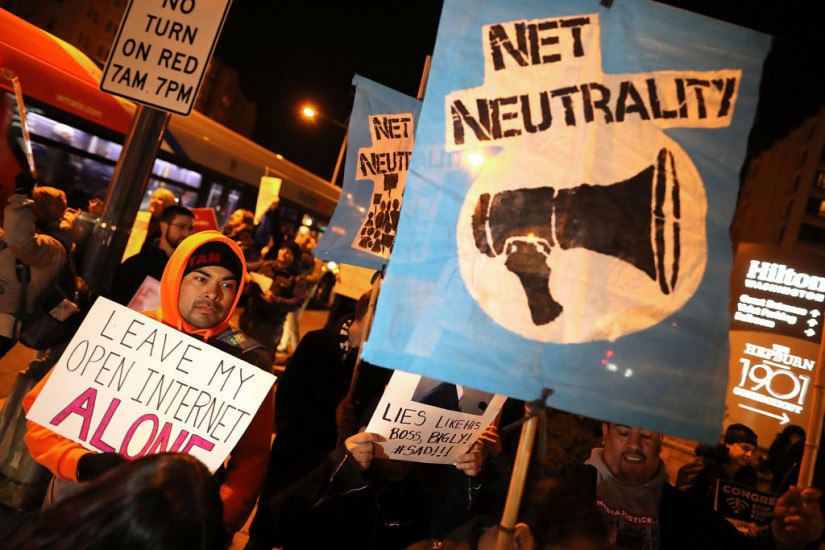The current net neutrality debate took shape during the early broadband era, beginning around 2000. During the 1990s, most people had reached the internet using dial-up services like AOL and CompuServe (the descendants of the “data-processing industry”), or thousands of small independent Internet Service Providers. AOL and these other firms technically relied on the underlying telephone network, and the protections of those 1970s rules---the Computer Inquiries---from interference or abuse by the telephone company.
But as phone and cable companies began deploying broadband networks in the late 1990s---using high-speed (for the time) DSL and cable-broadband technologies--- the questions first addressed in the 1970s reasserted themselves in new forms. How would the owners of “the pipes”---the wires that constitute the physical network---treat the applications that ran over those wires?
This is the question that interested me when I left Silicon Valley and moved into academia in 2002. It seemed to me that the broadband carriers had mixed motives. On the one hand, the sellers of broadband wanted and needed consumers to ditch dial-up and pay (more) for broadband. Many consumers were already accustomed to getting the “whole” internet from an ISP, not just a few sites approved by the carrier. AOL’s “walled garden” strategy---a network of sites that paid AOL---had backfired, suggesting that consumers wanted the open internet.
At the same time, broadband providers had both incentives and the means to block, throttle, or threaten some applications or sites. First, some of the new internet applications, like “voice over IP” telephone service or streaming video, competed directly with the carriers’ telephone or video offerings. Second, the phone and cable providers wanted to use their control over access to extract more money, either from the new internet sites (so called “termination fees”) or from customers. These aspirations were memorably captured by AT&T CEO Ed Whitacre in 2005:
"Now what they [the Internet firms] would like to do is use my pipes free, but I ain't going to let them do that because we have spent this capital and we have to have a return on it. … Why should they be allowed to use my pipes? The internet can't be free in that sense, because we and the cable companies have made an investment and for a Google or Yahoo or Vonage or anybody to expect to use these pipes free is nuts."
Indeed, by the early 2000s there were signs that the cable and phone companies intended to use their control of the physical architecture in restrictive ways. For one thing, some of the broadband carriers began to block a tool known as a "virtual private network," or VPN, most commonly used by people to log into work computers from home. Comcast was among the firms that blocked VPNs, and made its motives clear in this 2001 message to a user:
Thank you for your message. High traffic telecommuting while utilizing a VPN can adversely affect the condition of the network while disrupting the connection of our regular residential subscribers. To accommodate the needs of our customers who do choose to operate VPN, Comcast offers the Comcast @Home Professional product. @Home Pro is designed to meet the needs of the ever growing population of small office/home office customers and telecommuters that need to take advantage of protocols such as VPN. This product will cost $95 per month, and afford you with standards which differ from the standard residential product. If you're interested in upgrading ….
Other carriers, like AT&T, offered terms of service that tried to block users from using a variety of applications, including gaming applications, and from allowing more than one computer to use the broadband service by attaching a Wi-Fi device. As AT&T told users in its 2002 terms of service for DSL:
Examples of prohibited programs and equipment include, but are not limited to, mail, ftp, http, file sharing, game, newsgroup, proxy, IRC servers, multi-user interactive forums and Wi-Fi devices
Theft of Service. Customer shall not connect the Service or any AT&T Broadband Equipment to more computers, either on or outside of the Premises, than are reflected in Customer’s account with AT&T Broadband. Customer acknowledges that any unauthorized receipt of the Service constitutes theft of service, which is a violation of federal law and can result in both civil and criminal penalties.
But the most intense test of the tension between the owners of the wires and the internet industry arose when new internet applications, like Skype and Vonage, allowed users to make telephone calls using the internet (so-called VoIP) services either for free or for a fraction of the cost of traditional phone service. These services competed directly with the offerings of the phone and cable companies, and hence represented a potential erosion of revenue.
